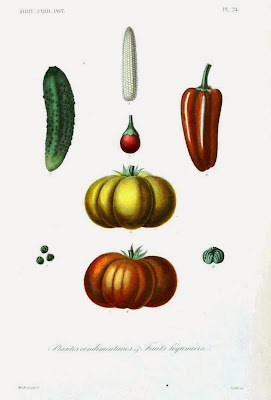One of these days I need to get the soil tested. I could not identify a WA State agency that tests soil. On a WSA website there is a list of private companies that test soil, but it was so complicated I gave up.
Meanwhile, I don't want to waste potential soil nutrients. I think compost is generally well balanced, if it comes from kitchen and garden waste. The raised beds contain a mixture of local soil - mole hills I collect from the 2 acres of lawn, finely ground by the little animals - and commercial compost by the truckload. Somewhere around 1/2 to 1/3 commercial compost. The lower part of the raised beds is inverted sod, obtained from planting trees and shrubs around the yard; and weeds or rotting straw mulch. I let the worms and fungi compost that
in situ.
Meanwhile, on weekends we heat the house using a wood stove. In general terms, the resultant ash consists of most of the nutrients a plant needs to make wood, at least, in concentrated form.
Oregon State University Extension site states wood ashes contain the 13 most needed minerals. Nitrogen and sulfur are lost as gases. With acid rain, sulfur is not usually in short supply but could be supplemented using epson salts. Nitrogen could be supplemented using fish emulsion or, if the situation permits,
fresh urine, 10:1 dilution in water. This last - saves on groundwater waste (flushing) -
from this website, "
Many toilets use between 50 and 100 litres of
water a day to flush approximately 1.5 litres of pee. The average
person has five wees a day and the average flush uses eight litres of
water - that's 40 litres.". I understand that last may be off-putting, but that's water I can use in the summer for watering vegetables trees fruits flowers shrubs; saves on groundwater and reduces salination of the drainage field and nitrogenous pollution of groundwater.
According to the OSU site, "
The fertilizer value of wood ash depends on the type of wood. According
to Sullivan, hardwoods produce about three times the ash and five times
the nutrients per cord as softwoods. A cord of oak provides enough
potassium for a garden 60 by 70 feet. A cord of Douglas fir ash supplies
enough potassium for a garden 30 by 30 feet." Areas to consider ash include "As a general rule, acid soils that would benefit from ash application
are usually found in those places in Oregon that get more than 20 inches
of rain per year. I could add to that, the effect of watering the raised beds through the summer, would also leach soluble nutrients, and nutrients are lost from the soil via vegetable harvests and plant materials that are removed. Those plant material nutrients do get returned to the garden as compost.
According to the
Ed Hume website, Phosphorus content usually ranges between 0.8% - 3%, potassium from
2.8% - 8.6%, calcium from 14%-28%, magnesium from 0.8%-2.8% and sulfur from 0.3%-0.5%. I imagine softwood ashes are at the low end of that, so N:P:K roughly 0:1:3 or something like that, with additional Ca and Mg. I was thinking about adding Mg via Epsom Salts but with the firewood ash, that would not appear needed. The
Purdue website states trace minerals include "
micro-nutrients such as iron, manganese, boron, copper and zinc.
Trace amounts of heavy metals such as lead, cadmium, nickel and
chromium also may be present." I figure the bad ones, if present in cordwood, are everywhere else as well, so are not a concern for me.
I really should get the soil tested. I may try
this site.
Or this one - maybe better.
They
also comment that " One-half to one pound of wood ash per year is recommended for each shrub and rose bush"
We use locally available wood, which is mostly softwood. I doubt that we go through 1/4 cord in a winter. The 30 X 30 ft calculation is 900 sq feet My raised beds when completed will be approx. 12 X 4 X 8 = 384 sq feet. The rest of the 2 acres is orchard, grass, and bushes and trees. So for the raised beds, roughly 1/3 of the winter's ashes could go on the beds, with the remainder spread around the wider area of the orchard and grass/trees/shrubs.
In practice, I can't calculate it closer. What I'm doing now is spreading a weekend's ashes on each unused raised bed, once for the winter. The woodstove season extends more than 12 weekends, so I think that's safe. The rest is scattered in a different area of orchard, or around bushes and trees, a fine dusting, each weekend.
Not around acid loving plants like conifers, blueberries, rhododendrons, camelias; or around potatoes. I like that the atoms from trees, burned in the fireplace, can become atoms it the trees I'm growing.
Random thoughts, on a chilly rainy late fall morning.




















